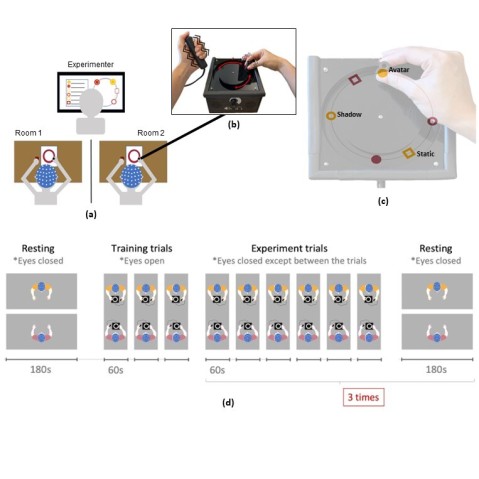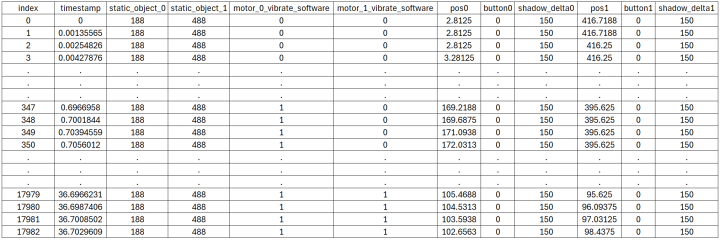Understanding the mechanisms and role of real-time social interaction is particularly crucial for an embodied and empirically grounded theory of social cognition. Indeed, little is known about the components that enable social interaction and make it such a powerful experience, or about the role that interactions play in constituting human beings. Questions are wide open regarding the roles of sensorimotor and neural activity during social interaction, the extent of the interpersonal neural couplings that arise and the processes that enable them, the relationship that such couplings have with sensorimotor couplings, the information flowing between the two, the structure of neural - and sensorimotor - coupled social systems that these couplings signal, and more generally the precise roles that these components have for human capacities and their disorders.
The Perceptual Crossing Experiment aims to further this understanding by investigating minimal touch-based sensorimotor interactions and measuring the brain-body-environment-body-brain system that emerges from them as extensively as possible. We do so by using the Perceptual Crossing Device, which enables people to interact in a minimal environment and feel each other through touch or sound, while recording the brain and body signals of both participants using EEG Hyperscanning and Physiological measurement systems.
As the first and last sense we experience in our lives, touch is a fundamental modality for human beings. It is also one that can be usefully studied with binary or one-dimensional first approximations: touch on a finger can be present or absent, with more or less pressure. Previous experiments on Perceptual Crossing interactions have already shown that, given the right incentives, complex patterns such as turn-taking will emerge in this setting. Here, we begin to further investigate the range of experiences that are possible with Perceptual Crossing and study the related neural and sensorimotor dynamics they emerge with. Studies will involve the sharing of emotions, the feeling of the presence or absence of other participants, and the exploration of early diagnostic methods for neurological disorders.
The Perceptual Crossing Experiment has open-source behavioral and physiological data that can be viewed and downloaded here. The preprint paper can be read here for a more detailed examination of the experiment. If you publish any analysis of the data, please cite the pre-print as the source of the PCE dataset. Additionally, please cite this article as the basis for the PCE hardware.
For more information about our own perspective regarding interpersonal coupling, feel free to look at this piece here.
Resources
- Preprint
- Behavioral and physiological set
- Preprocessed EEG hyperscanning data (part 1 and part 2)
- Hardware blueprints






